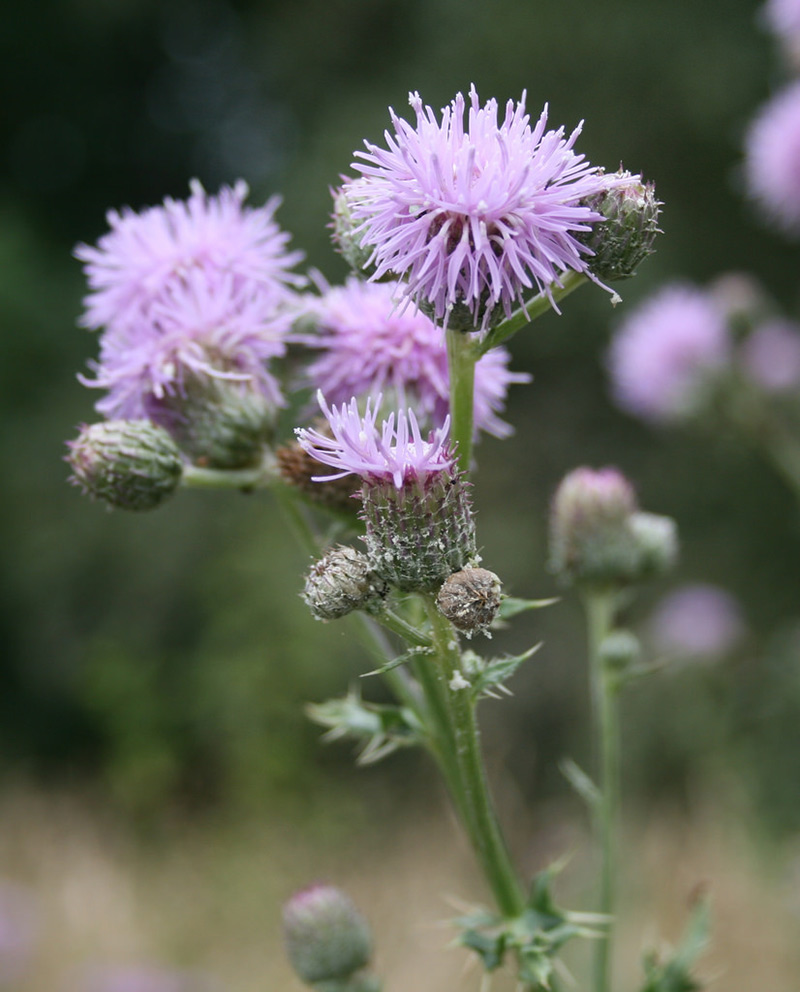
- High Country Conservation
- May 28, 2024
- Ask Eartha
Dear Eartha, I recently discovered that what I thought were beautiful flowers in my yard are actually noxious weeds. Can you explain how to identify noxious weeds and why they are harmful?
Spring has sprung, and with it, a burst of green across our beautiful Summit County. The snow has melted, the wildflowers are beginning to bloom, and everything feels alive again. It’s a season of renewal and growth, and many of us are eager to get our hands in the dirt, tending to our gardens and enjoying the great outdoors. But not all that glitters is gold—or in this case, not all that blooms is beneficial.
Amidst the vibrant blossoms and fresh greenery, you might notice some uninvited guests sprouting in your yard. While not all of these weeds are noxious, some can still pose a threat to your garden. Noxious weeds, in particular, can quickly turn your garden paradise into a tangled mess. But don’t worry—I’m here to help guide you through identifying and managing noxious weeds. I’ll answer your questions about what they are, how to get rid of them, and where to dispose of them.
What are OB-Noxious Weeds?
Noxious weeds are more than just an eyesore. These invaders are non-native species that spread aggressively, choking out our native flora and disrupting local ecosystems. Unlike your typical garden weeds, noxious weeds are particularly harmful because they have few natural predators in their new environments, allowing them to grow and spread unchecked. This unchecked growth leads to several problems:
- Environmental Impact: They outcompete native plants for sunlight, water, and nutrients, reducing biodiversity and affecting animals that rely on native flora.
- Economic Consequences: They can reduce crop yields, increase weed control costs, and lower land values, especially in agricultural areas.
- Aesthetic Impact: Noxious weeds can mar the beauty of natural landscapes, diminishing the enjoyment of outdoor activities.
Unfortunately, Summit County is now home to dozens of noxious weeds. Some common species you might encounter include:
- Canada Thistle: Recognized by its purple flowers and prickly leaves, this weed spreads quickly through its extensive root system.
- Musk Thistle: This tall weed with large, pink to purple flowers and spiny leaves can form dense stands that crowd out native plants.
- Oxeye Daisy: Often mistaken for the common daisy, this weed spreads rapidly and can dominate fields and meadows, reducing biodiversity.
Battle Plan: Banish Those Noxious Weeds
Now that we know what we’re up against, let’s talk about getting these invaders out of your yard. Here are some quick, effective strategies:
- Identification: Know your enemy! Summit County Weed Control has a useful resource with photos and descriptions of noxious weeks found locally. Summit County Weed Control can also help homeowners’ associations, schools, and individual homeowners develop noxious weed management plans.
- Pulling and Digging: For smaller infestations, hand-pull or dig out the entire root system, especially after a rain when the soil is soft.
- Mowing: Regular mowing can prevent certain weeds from flowering and seeding, limiting their spread.
- Herbicides: Use eco-friendly herbicides for stubborn infestations, following instructions carefully to avoid harming other plants and wildlife.
- Prevention: Healthy, dense vegetation can outcompete weeds. Mulch and plant native species to keep these invaders at bay.
Weed Wanderings: Finding Homes for Noxious Weeds
So, you’ve pulled, dug, and mowed, and now you’ve got a pile of noxious weeds. What next? Let’s find them a new home! Disposal is key to preventing these plants from spreading further. Here’s where to take your noxious weeds in Summit County:
- Non-Flowering Weeds: You can compost these safely.
- Flowering Weeds: These must be bagged and put in your trash bin or taken to the Summit County Resource Allocation Park to prevent seed spread.
- Large Infestations: If you have a significant amount of weeds, consider hiring a local licensed noxious weed contractor to handle the job.
As we bid farewell to our noxious weed foes, let’s celebrate the triumphs of community stewardship. Armed with knowledge and eco-friendly strategies, we’ve tackled these invaders head-on, reclaiming our yards and safeguarding Summit County’s biodiversity. Let’s keep up the fight, nurturing our landscapes into havens where native plants flourish, wildlife thrives, and bonds within our community grow stronger. Together, we’re weaving a tale of resilience and environmental stewardship—one pulled weed at a time. Happy weeding, High Country friends.
Ask Eartha Steward is written by the staff at High Country Conservation Center, a nonprofit dedicated to waste reduction and resource conservation. Submit questions to Eartha at info@highcountryconservation.org.
